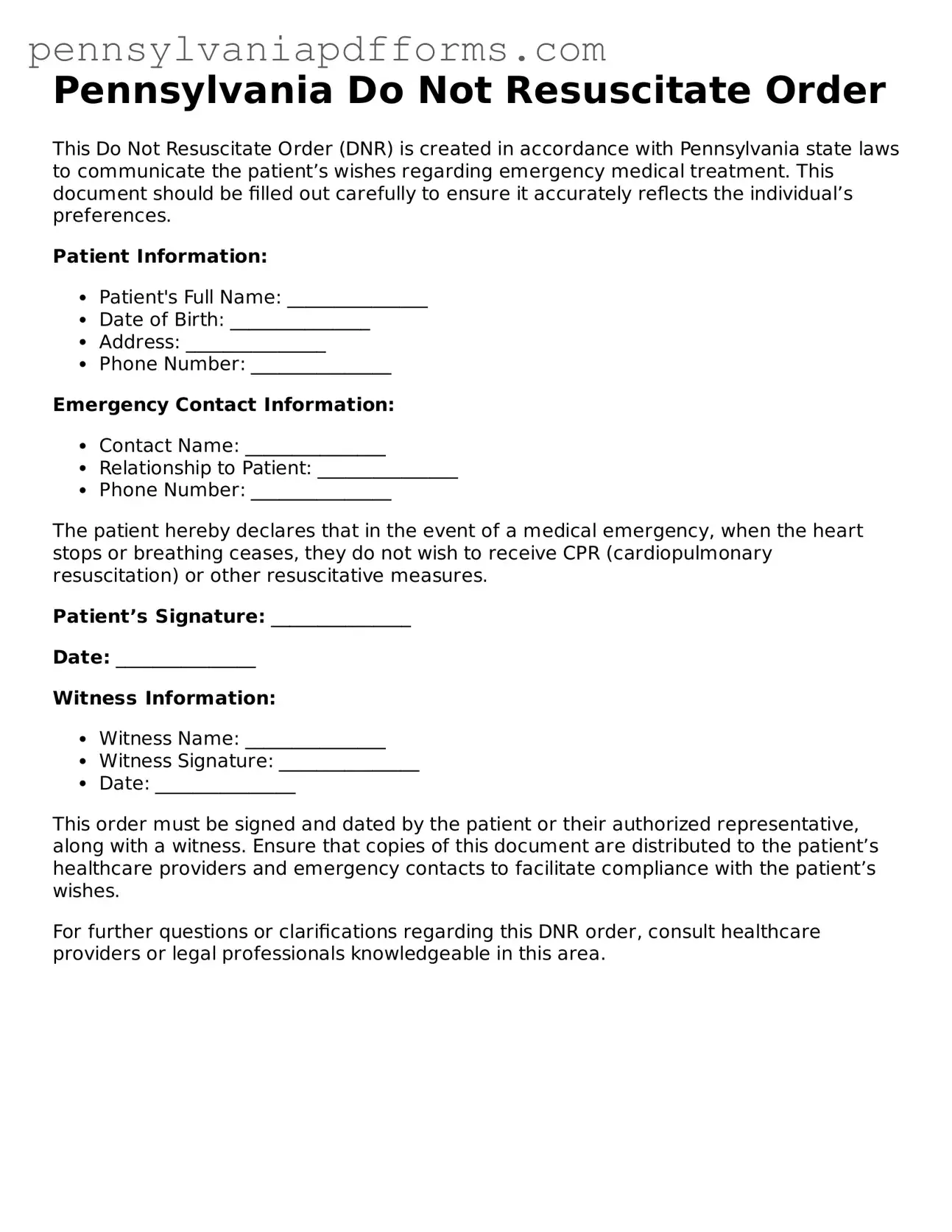Pennsylvania Do Not Resuscitate Order
This Do Not Resuscitate Order (DNR) is created in accordance with Pennsylvania state laws to communicate the patient’s wishes regarding emergency medical treatment. This document should be filled out carefully to ensure it accurately reflects the individual’s preferences.
Patient Information:
- Patient's Full Name: _______________
- Date of Birth: _______________
- Address: _______________
- Phone Number: _______________
Emergency Contact Information:
- Contact Name: _______________
- Relationship to Patient: _______________
- Phone Number: _______________
The patient hereby declares that in the event of a medical emergency, when the heart stops or breathing ceases, they do not wish to receive CPR (cardiopulmonary resuscitation) or other resuscitative measures.
Patient’s Signature: _______________
Date: _______________
Witness Information:
- Witness Name: _______________
- Witness Signature: _______________
- Date: _______________
This order must be signed and dated by the patient or their authorized representative, along with a witness. Ensure that copies of this document are distributed to the patient’s healthcare providers and emergency contacts to facilitate compliance with the patient’s wishes.
For further questions or clarifications regarding this DNR order, consult healthcare providers or legal professionals knowledgeable in this area.
